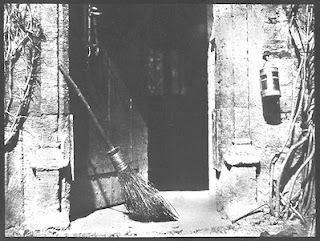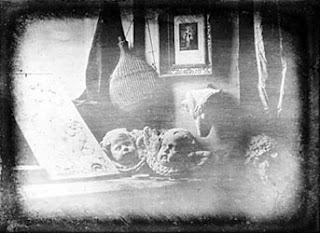http://en.wikipedia.org/wiki/Frederick_Scott_Archer
Wednesday, January 26, 2011
Frederick Scott Archer
Archer was born in 1813 at Bishop's Stortford in the UK. He invented the photographic collodion process which preceded the modern gelatin emulsion and is remembered mainly for this single achievement which greatly increased the accessibility of photography for the general public. He found that calotype photography was useful as a way of capturing images of his subjects. Unsatisfied with the poor definition and contrast of the calotype and the long exposures needed, Archer invented the new process in 1848 and published it in 'The Chemist' in March of 1851, enabling photographers to combine the fine detail of the daguerreotype with the ability to print multiple paper copies like the calotype. Archer died in 1857. His death is unknown but it is said that he had poor health.
http://en.wikipedia.org/wiki/Frederick_Scott_Archer
http://en.wikipedia.org/wiki/Frederick_Scott_Archer
William Henry Fox Talbot
Talbot was born on February 11, 1800 at Melbury Abbas. He was a well educated man, studying at Harrow and Trinity College. He wrote a lot of papers . His first was "Some Experiments on Colored Flame" and he contributed it to the Edinburgh Journal of Science. He wrote "Monochromatic Light," and contributed it to the Quarterly Journal of Science in 1827. A number of papers on chemical subjects, including one on "Chemical Changes of Color" he sent to the Philosophical Magazine. In 1844 he published his first book called Pencil of Nature. He also published Hermes, or Classical and Antiquarian Researches (1838-39), and Illustrations of the Antiquity of the Book of Genesis (1839). He was the author of English Etymologies (1846). He died at Lacock Abbey on September 17, 1877. Death is unknown.
http://www.nndb.com/people/397/000098103/
http://www.nndb.com/people/397/000098103/
Hippolyte Bayard
Bayard was born on January 20, 1801. On June 24, 1839 he invented his own process known as direct positive printing and presented the world's first public exhibition of photographs. He then produced his own method of producing photos called the Direct positive process. It exposed silver chloride paper to light, which turned the paper completely black. Then it was soaked in potassium iodine before being exposed in a camera. After the exposure, it was washed in a bath of hyposulfite of soda and dried. He would have people sit with their eyes closed so as to eliminate the eerie, "dead" quality produced due to blinking and moving one's eyes during such a long exposure. One of Bayard's most famous photograph's was called the Self Portrait as a Drowned Man. In the image, he pretends that he commited suicide, by sitting and leaning to the right. It was a very dark photograph and he wrote on the back of it, great detail about the photo, and what it represented. He later went onto work with photography and he was a founding member of the French Society of Photography. Hu suggested combining two negatives to properly expose the sky and then the landscape or building, and idea known as combination printing which began being used in the 1850's. Bayard died on May 14, 1887. Death is unknown.
<http:/en.wikipedia.org/wiki/Hippolyte_Bayard>
<http:/en.wikipedia.org/wiki/Hippolyte_Bayard>
Sir John Herschel
Herschel was born on March 7, 1792 in Berkshire, England. He was a mathematician, atronomer, chemist, and experimental photographer/inventor. In 1816 he took up astronomy and built a reflecting telescope. He was presented with the Gold Medal of the Royal Astronomical Society in 1826 and again in 1836. He was also presented with the Lalande Medal of the French Institute in 1885, in 1821 the Royal Society bestowed upon him the Copley Medal for his mathematical contributions. Herschel was made a Knight of the Royal Guelphic Order in 1831. Herschel and his wife's first photographs were of flowers in South Africa. Herschel used a camera lucida to obtain accurate outlines of the specimens and left the details to his wife. 112 of the 132 flower studies were collected and published as "Flora Herscheliana" in 1996. He made improvements in inventing the cyanotype process and variations like the chrysotype, the beginning of the modern blueprint process. He experimented with color reproduction, finding out that rays of different parts of the spectrum tended to impart their own color to a photographic paper. He got together with Henry Collen in the early 1840's, the portrait painter of Queen Victoria. Herschel originally discovered the platinum process on the basis of the light sensitivity of platinum salts, later developed by William Willis. Herschel added to the word photography. He applied the terms negative and positive to photography. He discovered sodium thiosulfate to be a solvent of silver halides in 1819, and told Talbot and Daguerre of his discovery that this "hyposulphite of soda" could be used as a photographic fixer , and make them permanent. His groun-breaking research was read at the Royal Society in London in March of 1839 and January 1840. Herschel died on May 11, 1871. Death is unknown.
http://en.wikipedia.org/wiki/John_Herschel
http://en.wikipedia.org/wiki/John_Herschel
Louis Jacques Mende Daguerre
Daguerre was born on Novemeber 18, 1787. He began his work as an apprentice architect, and at the age of sixteen was an assistant stage designer in a Paris theatre. He knew a lot about handing the light and lighting effects, and supplied the scenic and lighting effects for a number of operas in theatres in Paris. He used a camera obscura as an aid to painting in perspective, which then led him to seek to freeze the image. In 1829he signed up a partnership with Nicephore Niepce. In 1835 he put an exposed plate in his chemical cupboard, and later found out that it had developed. Daguerre concluded that it was due to the presence of mercury vapour from a broken thermometer. This discovery made it possible to reduce the exposure time from eight hours to thirty minutes. In 1837 he found out how to fix the images. This new process was called a Daguerreotype. On January 7, 1839 an announcement was made of the discovery, but the details were not divulged until August 19 when the process was announced to the public. The French government bought the rights to give the information to the world. In 1851 Daguerre died. Death is unknown.
http://www.rleggat.com/photohistory/history/daguerr.htm
http://www.rleggat.com/photohistory/history/daguerr.htm
Joseph Nicephore Niepce
Niepce was born in 1765. He is credited with producing the first successful photograph in June and July of 1827. He was fascinated with lithography, but he could not draw. So he had his son render images for the lithographs. His son was later drafted into the army in 1814. Niepce then started hearing about photochemical drawing. He soon turned his attention to silver salts. For the next decade he worked with photo-lithography. He found a way to fix images using acid baths. Niepce's breakthrough came in 1822 when he made a permanent image using a camera obscura. After exposing coated pewter plates to a camera image, he used the vapors from heated iodine crystals to darken the silver and heighten contrast. For his first photograph, it is believed that he used the lens of a crude camera and a pewtar plate with a few drops of bitumen (a tar like substance) on it and exposed the plate for eight hours. Niepce died of a stroke in 1833.
http://www.geog.ucsb.edu/~jeff/115a/history/niepce.html
http://www.geog.ucsb.edu/~jeff/115a/history/niepce.html
Subscribe to:
Comments (Atom)










